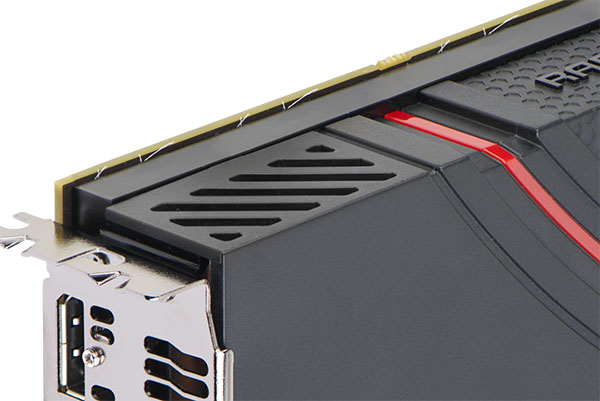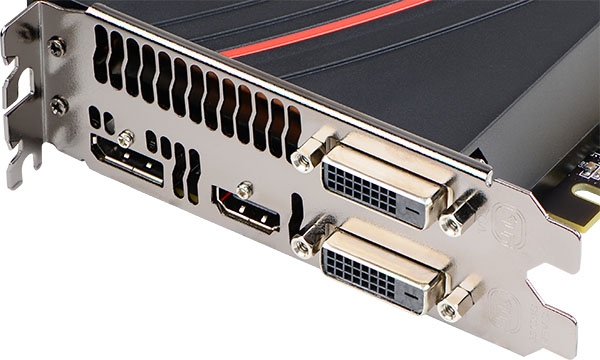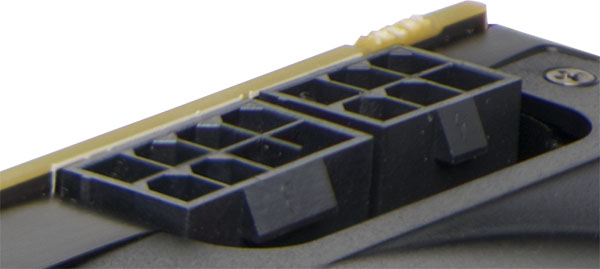AMD Radeon R9 290 Review: Fast And $400, But Is It Consistent?
We have all the makings of a dramatic launch: new high-end hardware, a last-minute delay for more performance, a crazy twist based on retail hardware, and our own home-baked solution to AMD's noise problem. Does Radeon R9 290 impress us or fall short?
Meet The Radeon R9 290
Does it come as any surprise that a second graphics card sporting AMD’s Hawaii GPU, lightly altered, appears identical to the Radeon R9 290X? Given the lack of evolution that went into 290X’s thermal solution, we wholly expected 290 to be indistinguishable. Today’s description gets a whole lot easier as a result.
In short, this is the same 11”-inch-long, dual-slot board with a 75 mm centrifugal fan.
Its top edge prominently features the same eight- and six-pin auxiliary power connectors, and a distinct lack of CrossFire connectors. To that point, Radeon R9 290 benefits from the xDMA engine built into Hawaii’s on-die compositing block. Right out of the box, two of these boards support CrossFire configurations with frame pacing enabled at Ultra HD and multi-screen resolutions. What they don’t yet support is frame pacing in DirectX 9 games like Skyrim or OpenGL-based titles. AMD still claims that the beta driver adding that capability will be available before the end of 2013.
Display output connectivity is the same, too. Modified from my 290X coverage:
The R9 290 card we received has two dual-link DVI ports, a full-sized HDMI output, and one DisplayPort connector. Its Hawaii GPU features an updated display controller though, which includes a third independent timing generator. So, although the board comes equipped with one less display output than the R9 280X we recently reviewed, you can actually hook up six screens operating at different resolutions and timings to the R9 290 with an MST hub.
Hawaii’s new display controller will also enable the 600 MHz pixel rates needed to support upcoming single-stream Ultra HD displays at 60 Hz. As you know, currently, the only way to drive a 4K screen is through two HDMI ports or one DisplayPort 1.2 output with MST support. These correspond to a pair of 1920x2160 tiles that come together as a 2x1 Eyefinity array. Next-generation scalars will make 3840x2160p60 possible without tiling—they’ll simply require higher pixel clocks. Radeon R9 290 can do it for sure, but AMD isn’t certain whether its older display controllers will.
We'll go into more detail in the pages that follow, but it's also worth noting that AMD claims that Radeon R9 290 bears the same 250 W typical board power as the 290X. That was a conservative estimate for the 290X, and the same likely goes for 290, too. Suitably, AMD also arms this board with one eight- and one six-pin power connector.
Get Tom's Hardware's best news and in-depth reviews, straight to your inbox.
Current page: Meet The Radeon R9 290
Prev Page Sidebar: Variability Turns Into A Graphics Card Crapshoot Next Page Test Setup And Benchmarks-
slomo4sho This is a win at $400! Good job AMD!Reply
http://techreport.com/review/25602/amd-radeon-r9-290-graphics-card-reviewed/9
11865199 said:However, the two retail Radeon R9 290X boards in our lab are both slower than the 290 tested today. They average lower clock rates over time, pushing frame rates down. Clearly there’s something wrong when the derivative card straight from AMD ends up on top of the just-purchased flagships. So who’s to say that retail 290s won’t follow suit, and when we start buying those cards, they prove to underperform GeForce GTX 780? We can only speculate at this point, though anecdotal evidence gleaned from our experience with R9 290X is suggestive.
Chris, these results differ drastically from real world results from 290X owners at OCN... I understand that your observations are anecdotal and based on a very small sample size but do you mind looking into this matter further because putting such a statement in bold in the conclusion even though it contradicts real world experiences of owners just provides a false assumption to the uninformed reader...
The above claim has already escalated further than it should... A Swiss site actually has already rebutted by testing their own press sample with a retail model and concluded the following:
With the results in hand, the picture is clear. The performance is basically identical between the press copy and graphics card from the shelf, at least in Uber mode. Any single frame per second is different, which is what may be considered normal as bonds or uncertainty in the measurements.
In the quiet mode, where the dynamic frequencies to work overtime, the situation becomes slightly turbid. A minor performance difference can be seen in some titles, and even if it is not about considerable variations, the trend is clear. In the end, it does an average variance tion of only a few percent, ie no extreme levels. The reason may include slightly less contact with the cooler, or simply easy changing ambient temperature. -
Heironious This is weird, something must be wrong with your system. I have an i5-2500, GTX 780, 16 GB G Skill 1333, 500 GB samsung SSD, Windows 8.1 64 bit, and on Ultra with 4x MSAA I get 80 - 100 FPS....Reply -
Heironious Multiplayer would add more stress to the CPUs / GPU's. Like I said, something is wrong with their machine. I would prob get higher on single player. Im going to check and find out.Reply -
slomo4sho Reply11865222 said:According to Tom's Benchmarks Nvidia's price drop just became meaningless
Now to wait for the non-reference cards at the end of the month! -
jimmysmitty I agree that the stock cooling is pretty bad but in honesty, no matter how nice they make it after market is always better. The Titan may not have had after market but if it did it would have cooled better.Reply
It looks like a good card for the price as it even keeps up with the $100 more GTX780. This is good as NVidia may drop prices even more which means we could also see a price drop on the 290X and I wouldn't mind a new 290X Toxic for sub $500. -
guvnaguy In terms of potential performance it seems like a great card, but you get what you pay for with regards to chip quality and cooling.Reply
Best to wait a month or two before buying to see how this all goes down




